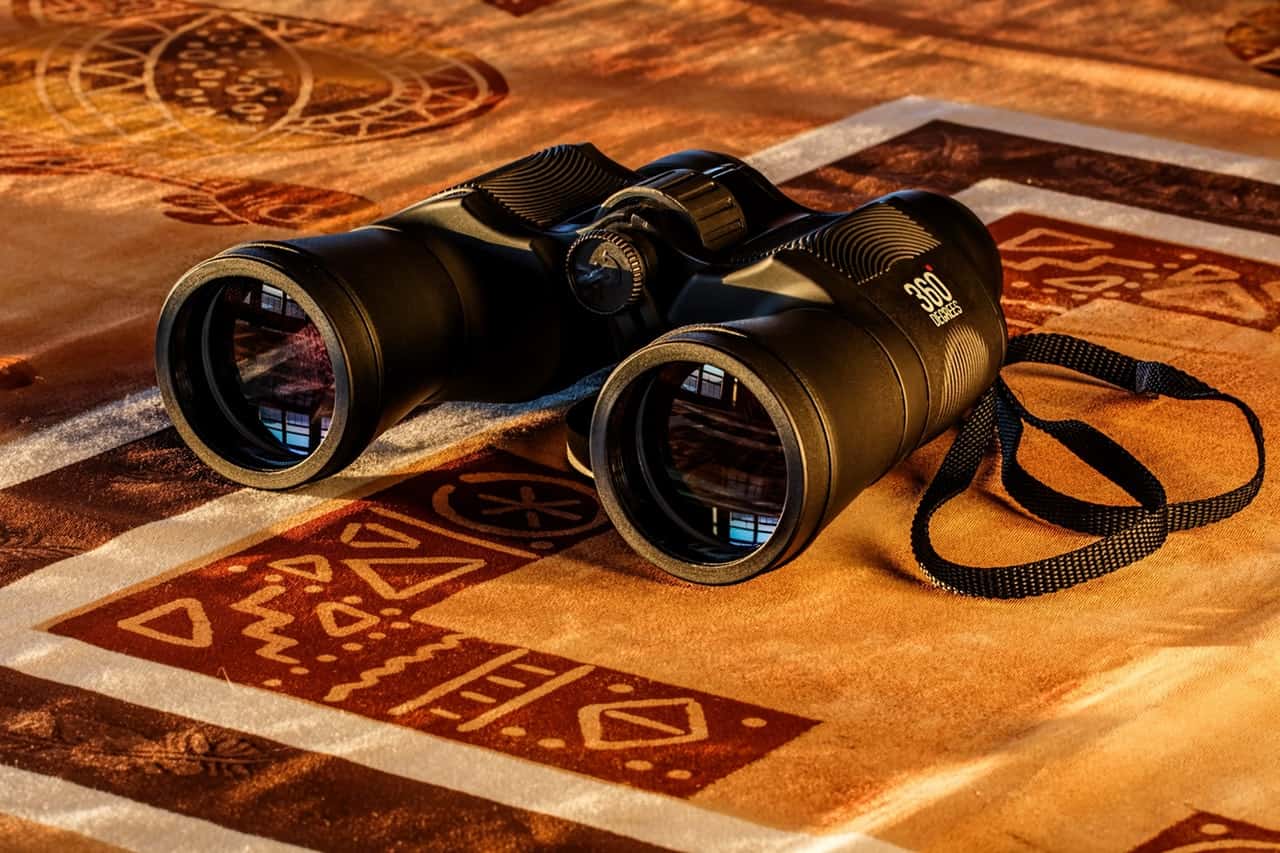If you’re in the market for a pair of high-quality binoculars, you may be considering investing in a set from Swarovski. While these optics are typically well-made and reliable, a few common problems can crop up from time to time.
Here’s a hint of what problems you might face with Swarovski binoculars: These binoculars can be expensive, they aren’t always the best choice for low-light environments, they can be bulky and difficult to carry around, and some people find them difficult to focus.
Today, we’ll discuss some of the most common issues with Swarovski binoculars and tips to troubleshoot them. We hope this information will help you decide whether or not to purchase a set of these optics.
List Of Common Problems With Swarovski Binoculars
- Difficult to focus, especially for users with presbyopia.
- Narrow field of view, making it difficult to take in the whole scene.
- Glare can be a problem, particularly in bright conditions.
- The image quality may be poor, with low contrast and muted colors.
- These binoculars may be uncomfortable to use due to their weight and size.
- Difficult to keep steady, particularly when hand-held.
- Users may find them difficult to hold for extended periods.
- The binoculars may be susceptible to fogging, especially in humid conditions.
- They may require frequent adjustments to maintain a clear image.
- The eyepieces may be prone to slipping, making it difficult to keep them in place.
- The binoculars may need to be recalibrated frequently.
- They may be hard to clean due to their complex construction.
- The binoculars may be subject to damage due to their delicate nature.
Now, this is a broad list of Swarovski binocular problems, and there’s a lot you can do to avoid these issues. So, let’s dive deeper, and discuss these problems in detail to find easy solutions for them!
Common Problems with Swarovski Binoculars & Their Solutions
| Model | Problem | Solution |
| Swarovski NL Pure 10×32 | Narrow eye relief | Avoid wearing spectacles |
| Swarovski EL 10×42 WB | Prone to slipping | Use a nylon binocular chassis |
| Swarovski EL Range 8×42 | Average color quality | Use for day-time activities |
| Swarovski CL Companion 8X30 B | Subject to damage because they’re delicate | Use a neck strap and hold them with a steady hand |
| Swarovski CL Pocket 10×25 | Narrow barrels are difficult to clean | Get a specialized binocular cleaning brush |
| Swarovski SLC 15X56 WB | Uncomfortable to hold because of their size | Use a binocular mount/tripod |
| Swarovski EL 8.5×42 WB | Loses calibration quite often | Learn to calibrate them the right way |
| Swarovski EL Range 10×42 | Susceptible to fogging | Use lens covers |
Swarovski Binoculars Alignment Problems
Swarovski binoculars are an excellent choice for anyone looking for high-quality optics, but they can sometimes be difficult to align correctly. Here are a few tips to help you troubleshoot any alignment problems you may be experiencing with your Swarovski binoculars:
- Make sure that your binoculars’ objective lenses (the large end of the binoculars) are parallel to each other. If they’re not, use the adjustment screws on the side of the binoculars to adjust them until they are.
- Check that the eyepieces are perpendicular to the barrels of the binoculars. If they’re not, use the adjustment screws on top of the eyepieces to align them.
Swarovski Binoculars Focusing Problems
If you’re having trouble getting your Swarovski binoculars to focus properly, here are some troubleshooting tip you can try:
- First, make sure that the eyepieces are clean and free of fingerprints or smudges.
- Next, check the diopter adjustment on the right eyepiece; if it’s set too far off from your vision, it can cause focusing problems.
- Finally, if you’re still having trouble, try resetting the focus by loosening/tightening the center screw on the front of the binoculars until the image is clear.
Hopefully, one of these tips will help you get your binoculars to focus properly again.
Swarovski Binoculars Collimation Problems
If your binoculars have Porro prisms, you’ll want to make sure they’re aligned correctly to enjoy good color differentiation. You can do this by losing or tightening the knurled knob on the center bridge of the binocular barrel.
If you’re having trouble with your Swarovski binoculars and they seem to be out of collimation, there are a few things you can do to try and troubleshoot the problem.
- First, check if the eyepieces are properly seated in the barrels. They should be snug but not too tight. Observe a distant target through the binoculars. If the image is not symmetrical, one of the objectives needs to be moved closer to or further away from the ocular lens.
- Next, take a look down the barrels and see if you can spot any misalignment between the lenses. If everything looks okay there, then it’s time to take a closer look at the prisms.
You can also follow your binoculars’ user manual to understand how collimation works and do it the right way!
Swarovski Binoculars Double Vision Problems
Swarovski makes some of the best binoculars on the market, but even the best can have occasional issues. One fairly common problem with binoculars is double vision. This can be caused by a number of things, but often it’s simply due to improper alignment of the lenses.
To fix this, first, make sure that the eyepieces are properly aligned with your eyes. If they’re not, adjust them until they are.Once the eyepieces are properly aligned, take a closer look through your binocular lenses. If you still face double vision problem, you might need expert help to align the lenses.
Swarovski Binoculars Chromatic Aberration
Chromatic aberration can cause several problems with your binoculars, including blurry images, color fringing around objects, and decreased sharpness.
Also, if you wear glasses, this aberration can make focusing and color identification tougher for you. Therefore, it’s in your best interest to keep chromatic aberration at bay.
Here’s what you can do to help reduce or prevent chromatic aberration in your Swarovski binoculars:
- Make sure that your binoculars are properly aligned and collimated.
- Keep your Swarovski binocular eyepieces are clean and free of dust and dirt.
- Try adjusting the focus ring until the image is as clear as possible.
- And lastly, if all else fails, you may need to have your binoculars serviced or repaired.
Swarovski Binoculars Coatings Problems
If you own a pair of Swarovski binoculars, you may have noticed that the lenses tend to get dirty and accumulate fingerprints fairly easily.
This is because Swarovski binoculars have special coatings on the lenses that help to repel water and dirt.
However, over time these coatings can become worn or damaged, which can cause the lenses to become more difficult to keep clean. Swarovski recommends cleaning their binocular lenses with a soft, dry cloth. If you need to use a binocular cleaner, choose a mild one. This cleaner will remove stuck-on dirt, debris, and mold from your binocular lenses without scratching their coating.
Swarovski Binoculars Foggy Lenses
Swarovski binoculars are some of the best, but they can still get foggy. There are a few reasons why this might happen, and luckily there are a few things you can do to fix it.
Your Swarovski binoculars might be fogging up because the lenses are cold and the air around them is warm.
This temperature difference causes condensation to form on the lenses, creating that foggy look. If this is the case, you can try putting your binoculars in a carrying case or bag, so they warm up to room temperature more slowly. You could also try using anti-fog wipes or spray before you use them.
Swarovski Binoculars Replacement Parts
If your Swarovski binoculars are giving you a tough time because of their focusing, weather resistance, or color differentiation issues, you need a backup plan. Here are some Swarovski binoculars replacement parts you should know about:
- Swarovski eyecups
- Swarovski eyepieces
- Swarovski replacement lenses
- Swarovski prisms
- Swarovski tripod adapters
- Swarovski binocular chassis and cases
- Swarovski replacement rain guards
Swarovski Binoculars Repair (Cost & Contact Details)
The cost of repairing Swarovski binoculars will depend on the specific issue that needs to be fixed. Generally speaking, however, repairs for these binoculars can be quite costly. Swarovski is a high-end brand, and its products are made with very precise, high-quality parts. As such, replacement parts and labor tend to be more expensive than for other brands.
If your Swarovski binoculars are in need of repair, it is best to send them back to the company for service. Swarovski offers a limited warranty on their products, and they will likely be able to offer you a free or discounted repair as long as your binoculars are covered under warranty.
You can easily get in touch with the team at Swarovski Optik to claim your warranty or request a repair; they will be more than happy to help. Here are the contact details you need:
- Phone number: 00800 3242 5056
- Email: customerservice@swarovskioptik.com
Also Read:
- Zeiss Binoculars Not Focusing
- Canon Blurry images Problem
- Nikon Binoculars Coatings Problems
- Bushnell Binoculars Double Vision Problems
- Vortex Binoculars Double Vision Problems
- Fujinon Binoculars Eye Relief & Double Vision Issues
- Leupold Binoculars Lens Fogging
- Hawke Binoculars Eye Relief Issue
Summing Up
Swarovski binoculars are a great investment for anyone who loves spending time outdoors. Not only are they stylish and fun to use, but they’re also incredibly durable and easy to maintain. There are a few general issues that have been reported with Swarovski binoculars. These include difficulty focusing, poor image quality, and chromatic aberration. However, it is easy to fix these problems with some simple adjustments. Here are a few tips to help you get the most out of your binoculars:
- Store your binoculars in a cool, dry place when not in use.
- Clean the lenses with a soft, dry cloth.
- Avoid exposing them to extreme temperatures or sudden temperature changes.
- Make sure that the center wheel on your binoculars is properly aligned.
- Check the eyepieces and make sure they are clean and free of smudges.
With a little care and attention, your Swarovski binoculars will continue to perform at their best for years to come. We wish you luck!

Binos enthusiast since I was 12 – A real expert in all things optics including rifle scopes and red dots. Live in Dubai & love writing, beaches and eating!






